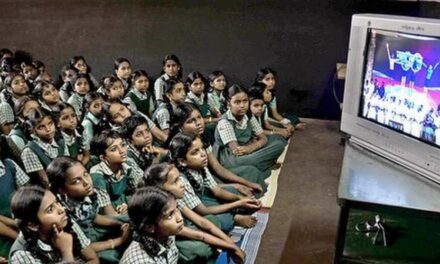Digital technology has altered all aspects of media cultures, including questions of identity that can affect everything from the production of texts, their content, their distribution, their reception, and more. At the same time, popular and academic understandings of queerness have evolved to incorporate expanding ideas of gender, sexuality, race, disability, ethnicity, and other identity categories. Not only has digital technology altered the ways in which queerness can be articulated, but queer media has also shaped the form and reception of digital texts. Understanding queerness in the digital age requires us to account for the changes in both queer studies and digital studies.
For this issue, we welcome submissions that examine the ways in which queerness and digital media interact. These articles could include, but are not limited to, placing media texts in a broader cultural context that speaks to the nature of queerness in the digital age, contextualizing the relationship between queer audiences and media texts, or analyzing queer digital production cultures. Submissions could also consider queerness from the perspective of platformization, fandoms and audience reception, as well as digital media ecologies. What is the impact of social media on queer practices and identities? How does the rising visibility of queer identities leave queers, especially queers of color, vulnerable to exploitation or attack? How do queer creators utilize and navigate ever-changing media ecosystem? We invite submissions that investigate these or other questions related to queerness in the digital age through any applicable methodological or theoretical approaches.
Potential Submission Themes:
- The evolution of queer theory and its application to media (e.g. queer of color critique, trans theory, crip theory)
- Queerness, race and ethnicity (e.g. Afrofuturism, disidentification, queer indigenous studies)
- Digital technology, queer bodies, and disability
- Changing receptions in queer audiences and queer-targeted media
- Queer modes of fandom
- Creators, star texts, and micro-celebrities
- Digital pornography studies
- Articulations of queerness in digital television (e.g. streaming platforms, webseries, second-screen engagement)
- Queerness in digital games
- The democratization of digital cinema (or lack thereof)
- Queer comics, webcomics, and digital distribution
- Non-fiction media aesthetics and portrayals of queerness
- Queer podcast networks, series, and hosts
- Social Media, Online Communities, and Dating Apps (e.g. Facebook, Twitter, Instagram, Patreon, Tumblr, Her, Grindr, Scruff, OnlyFans)
- Queer youth and the disruption of the coming out narrative
- Assimilation and respectability politics (e.g. Neoliberalism, homonormativity, homonationalism)
- Queer music production, distribution, and algorithmic discovery
- Modes of queer exhibition (e.g. film festivals, museums and galleries, community spaces)
- Reflections on what “queer” or “queer studies” might mean or signify in the digital age
Submission Guidelines
Submissions should be between 6,000– 7,500 words (approximately 20-25 pages double-spaced), formatted in Chicago style. Please submit an electronic copy of the paper, along with a one-page abstract (no more than 100 words), both saved as Microsoft Word files. While images are not required for submissions, if your submission includes images, please ensure that they are high resolution and included as an image file separate from your Word files. Remove any identifying information so that the submission is suitable for anonymous review. The journal’s Editorial Board will referee all submissions.
Send electronic manuscripts and/or any questions to thevelvetlighttrap@gmail.com. All submissions are due July 31, 2019.





